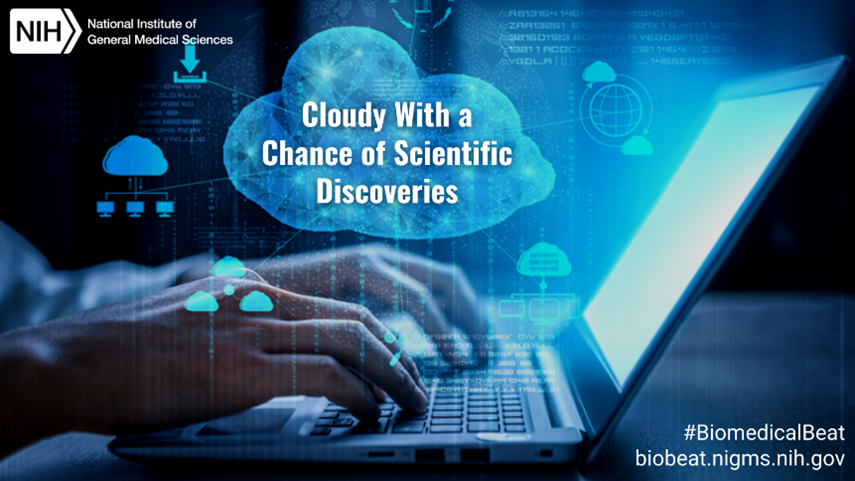The cloud. To many, it’s a mysterious black hole that somehow transports photos and files from their old or lost phone to their new one. To some researchers, though, it’s an invaluable resource that allows them access to data analytics tools they wouldn’t otherwise have.

Scientists have begun using cloud computing to store, process, and analyze their data through online bioinformatics tools. Biological data sets are often large and hard to interpret, requiring complex calculating instructions—or algorithms—to understand them. Fortunately, these algorithms can run on local computers or remotely through cloud computing.
One advantage of cloud-based programs over local computers is the ability to analyze data without taking up the user’s personal storage space. With cloud-based storage, researchers can store their large data files, including their labeled notes called annotations. Another benefit is that users have easy access to software packages within the cloud for data analysis. The cloud also encourages collaboration among scientists by making it easy to share large amounts of data.
What Is the Cloud?
The cloud refers to servers accessed over the internet that could physically be located anywhere in the world. You can think of it like using the gym. Just like you could buy a treadmill to work out at home, you could buy the individual computational tools for your specific project. But both limit what you have available to meet your workout/computing needs. A gym membership provides more choices: access to a wide variety of workout equipment, on-hand staff to guide you through their equipment or programs, and an option for a personal trainer to tailor a workout plan. Similarly, a cloud service can provide a variety of resources and tools, access to experts who can help you navigate them, and an option for personalized technical assistance.

The membership route is often more cost-effective because workout equipment and computational resources are expensive, require upkeep, and become outdated. As the owner, you’re responsible for those maintenance costs, whereas your gym fee includes updates to the machines and facility security, and your cloud fee includes hardware and software upgrades and data security. Security is often a concern for people hesitant to use the cloud, but cloud providers offer strong security features like data encryption and other technologies.
NIGMS-Funded Cloud-Based Resources
Many NIGMS-funded scientific cores—facilities with centralized, shared, research resources—utilize and support cloud computing in specific areas of research, such as proteomics, biomolecular nuclear magnetic resonance, and molecular modeling. NIGMS promotes moving computational activities from local resources to the cloud through specific funding opportunities, such as one for building cloud-based learning modules, and participation in the NIH-wide STRIDES Initiative.


